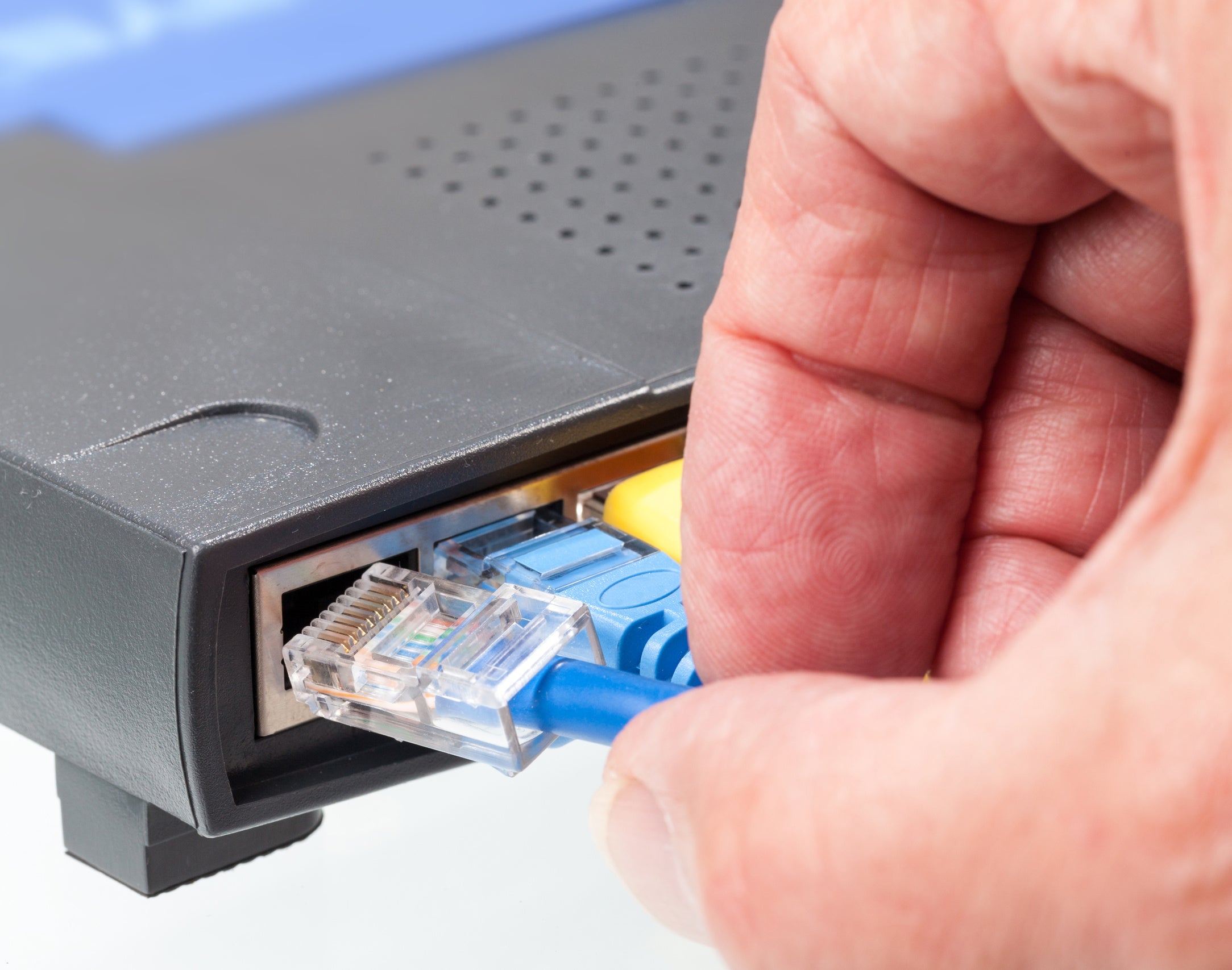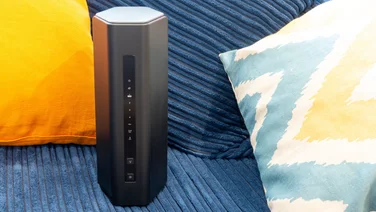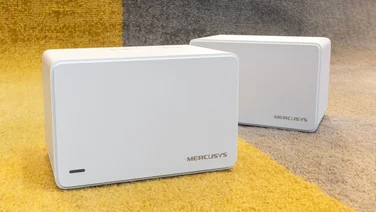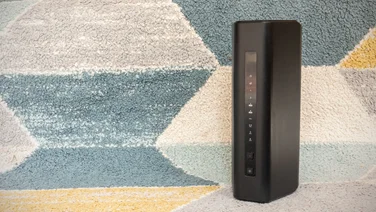To help us provide you with free impartial advice, we may earn a commission if you buy through links on our site. Learn more
- Best router: At a glance
- How we test wireless routers
- The best wireless routers to buy in 2025
- 1. Asus RT-AX59U: Best router for most people
- 2. Linksys MR7350: Best budget router
- 3. Netgear Nighthawk RAXE500: The fastest Wi-Fi 6E router we've tested
- 4. Netgear Nighthawk RS300: Best value Wi-Fi 7 router
- 5. Asus ROG Rapture GT-AX6000: Best router for gamers

If your Wi-Fi connection is constantly dropping, or if Netflix keeps buffering, the culprit is probably your router. Replacing it with a new model can improve your Wi-Fi performance, speed and coverage – and ensure you’re getting the most out of your broadband connection.
To help you choose the best wireless router, we’ve picked out a selection of the best models you can buy, from bargain prices to premium options with the latest Wi-Fi 6E and Wi-Fi 7 technologies. Each one has been through our rigorous testing procedure to make sure it delivers on its promises.
You’ll see our at-a-glance advice below on which models are best for different needs – or for a deeper look at what makes a router a winner, jump to our buying guide where we demystify the technology and explain what to look for.
Best router: At a glance
| Best router for most people | Asus RT-AX59U (~£123) | |
| Best budget router | Linksys MR7350 (~£84) | |
| Fastest Wi-Fi 6E router | Netgear Nighthawk RAXE500 (~£347) |
How we test wireless routers
All wireless routers we review are thoroughly put through their paces before we decide whether or not to recommend them.
Features:
- We explore all a router’s advanced features, including parental controls, network security, VPN support and other capabilities, to ensure your needs will be met
- We also look for conveniences such as LAN ports and USB connections, and weigh up how accessible and user-friendly the management software is
Performance:
- Every router goes through a battery of standardised performance tests, all performed in a domestic setting to give you an idea of how they might fare in your own home
- Download and upload speeds are presented in the reviews as comparative charts so you can see how the router compares against its closest rivals
For example, here’s how the routers on this page compare across our test locations:

Value for money:
- For each router, we weigh up the asking price, in light of its features and performance, and see how it stacks up against competing models, to help you get the best bang for your buck
READ NEXT: Best Wi-Fi extenders
The best wireless routers to buy in 2025
1. Asus RT-AX59U: Best router for most people
Price when reviewed: £123 | Check price at Amazon

- Great for… everyday internet tasks
- Not so great for… roles where performance is top priority
The Asus RT-AX59U isn’t the fastest Wi-Fi 6 router around, but it provides strong wireless coverage for a very reasonable price. It’s a top choice for budget-conscious shoppers who don’t need the very highest levels of performance.
The hardware is more versatile than you might expect for the price. Its Wi-Fi 6 radio goes up to a maximum speed of 3.6Gbits/sec – we measured its average download speed across all our test locations at 49MB/sec – while three network ports allow for a decent number of wired connections. There’s also a pair of USB connectors, which you can use for external storage, printer sharing or 4G/5G mobile internet.
The Asus RT-AX59U also employs a best-in-class suite of software features. You can configure almost every aspect of your home network, apply security and parental control settings and define up to 16 VPN connections. Asus’ AiMesh technology also lets you easily pair other Asus routers to extend your wireless coverage.
If you’re willing to pay more, you can get a faster router with multi-gigabit Ethernet and better long-range performance. But for most homes those high-end models are overkill; the RT-AX59U is all you need.
Read our full Asus RT-AX59U router review for more details
Key specs – Wi-Fi standard: 802.11ax (Wi-Fi 6); Stated speed: 4.2Gbits/sec; Ethernet ports: 4 x Gigabit Ethernet; USB ports: 1 x USB 2, 1 x USB 3.2 Gen 1 (5Gbits/sec)
2. Linksys MR7350: Best budget router
Price when reviewed: £84 | Check price at Amazon

- Great for… anyone seeking strong Wi-Fi performance at a great price
- Not so great for… those who like to tinker with advanced features
It might not be the prettiest wireless router you’ve ever seen, but the Linksys MR7350 is quick enough – we measured its average download speed at 47MB/sec across all of our test locations – and seriously good value. Even at its original price of £157 it impressed us with its rapid Wi-Fi 6 downloads; now the price has plummeted to around £85, making it a fantastic bargain for anyone seeking affordable wireless at home.
Our only caveat with the MR7350 is that management can be a chore. Although the router does include a USB port for easy file sharing, we found the web interface was sluggish, and the overall feature set is rather limited. But that won’t be an issue for everyone: if you just want fast, low-cost Wi-Fi it’s a brilliant router.
Read our full Linksys MR7350 review for more details
Key specs – Wi-Fi standard: 802.11ax (Wi-Fi 6); Stated speed: 1,200Mbits/sec; Ethernet ports: 5 x Gigabit Ethernet; USB ports: 1 x USB 3.0
3. Netgear Nighthawk RAXE500: The fastest Wi-Fi 6E router we’ve tested
Price when reviewed: £347 | Check price at Amazon

- Great for… those demanding the very fastest Wi-Fi speeds
- Not so great for… your wallet
Wireless routers keep on getting faster, but the Netgear Nighthawk RAXE500 is an undisputed front-runner. It uses the recent Wi-Fi 6E standard, allowing it to transfer data over the 6GHz radio band when used with compatible client devices, and has an enormous total bandwidth of 11Gbits/sec.
This enabled it to deliver the fastest Wi-Fi transfer speeds we’ve ever seen in our tests, reaching mind-boggling download rates of 152MB/sec at close range and averaging 89MB/sec across all test locations over 6GHz networks. Multi-gigabit Ethernet is built in too, for ultra-fast wired networking.
The main catch is the price: you’re definitely paying for that phenomenal performance. And as Wi-Fi 7 routers start to appear, the RAXE500 might not keep its crown for much longer. For now though this router is the best of the best.
Read our full Netgear Nighthawk RAXE500 review for full details
Key specs – Wi-Fi standard: 802.11ax (Wi-Fi 6E); Stated speed: 11,000Mbits/sec; Ethernet ports: 4 x Gigabit Ethernet, 1 x 2.5Gbits/sec; USB ports: 2 x USB-A 3.2 Gen 1 (5Gbits/sec)
4. Netgear Nighthawk RS300: Best value Wi-Fi 7 router
Price: £260 | Check price at Amazon

- Great for… anyone wanting to futureproof their home wireless setup
- Not so great for… a speed boost over Wi-Fi 6 (yet)
Wi-Fi 7 is the latest, greatest wireless standard around but even though it has been around for some time now, hardware has remained stubbornly expensive so far. This Netgear router is far from cheap but it’s the first router we’ve tested that even approaches the mark where it could be called affordable.
As a result, it wins the award for the best Wi-Fi 7 router we’ve seen so far and it’s definitely worth considering if you want to future-proof your wireless setup at home – especially when it gets its promised MLO (Multi-Link Operation) upgrade. It pretty well specified, too, with a maximum rated wireless speed of 9.3Gbits/sec, two Gigabit Ethernet ports and a pair of 2.5Gbits/sec Ethernet ports, a USB 3 port for sharing storage, and a 2.5Gbits/sec WAN port for internet connection. Just don’t get too excited by wireless speeds just yet, as in our current tests it currently only delivers the same performance as Wi-Fi 6 routers.
Read our full Netgear Nighthawk RS300 review for full details
Key specs – Wi-Fi standard: 802.11be (Wi-Fi 7); Stated speed: 9.3Gbits/sec; Ethernet ports: 2 x Gigabit Ethernet, 2 x 2.5Gbits/sec; USB ports: 1 x USB-A 3.0 (5Gbits/sec)
5. Asus ROG Rapture GT-AX6000: Best router for gamers
Price when reviewed: £306 | Check price at Amazon

- Great for… gamers seeking a premium online experience
- Not so great for… simple networking needs – it’s overkill
You can play games with any kind of router, but Asus’ ROG models come with a host of features designed to boost your experiences. The ROG Rapture GT-AX6000 is a fantastic choice – it’s cheaper than the top-of-the-line GT-AXE11000, as it doesn’t support the latest Wi-Fi 6E technology, but it otherwise has almost all the same features as the high-end model.
Those include a LAN port that automatically gives priority to devices connected to it, a “Game Boost” mode that prioritises internet traffic going to and from recognised game servers and built-in port-forwarding rules for over 70 games. There’s also a full set of home networking features, including parental controls and network security module – it’s a fabulous all-rounder.
Performance is superb too, with a rated top speed of 4.8Gbits/sec over 5GHz and 1.1Gbits/sec over 2.4GHz. In real-world testing we found the router performed very speedily in our network testing at close range, averaging 61MB/sec for downloads across our testing locations, although wireless speeds naturally fell off at longer distances.
Read our full Asus ROG GT-AX6000 review for more details
Key specs – Wi-Fi standard: 802.11ax (Wi-Fi 6); Stated speed: 6,000Mbits/sec; Ethernet ports: 4 x Gigabit Ethernet, 2 x 2.5Gbits/sec; USB ports: 1 x USB 3.2 Gen 1 (5Gbits/sec), 1 x USB 2
6. Asus RT-AXE7800: Best all-round Wi-Fi 6E router
Price when reviewed: £250 | Check price at Amazon

- Great for… strong wireless performance and features
- Not so great for… dedicated gamers or those wanting Wi-Fi 7
The striking six-sided design of the Asus RT-AXE7800 demands attention – and so does its performance. Using regular Wi-Fi 6 we measured download speeds of 88MB/sec at close range, and a very creditable 28MB/sec, even at the far end of the house. That means most people can expect strong wireless coverage throughout their homes, without paying more for a mesh system or additional extenders.
Things are even better with Wi-Fi 6E. Connecting from a 6GHz-compatible laptop we saw tremendous download speeds, topping 100MB in multiple rooms – performance wasn’t quite as strong over longer distances (the average download was 78MB/sec across all locations), though. A 2.5GbE socket allows for multi-gigabit wired connections, too.
The RT-AXE7800 also benefits from Asus’ terrifically versatile firmware, which is loaded with advanced features. Network security and parental controls are built in for free, and Asus’ support for third-party VPNs is the best in the business.
All of this goodness comes at a very competitive price – just £250 at the time of writing. That’s a steal for this excellent combination of performance and features.
Read our full Asus RT-AXE7800 router review for more details
Key specs – Wi-Fi standard: 802.11ax (Wi-Fi 6E); Stated speed: 7.8Gbits/sec; Ethernet ports: 4 x Gigabit Ethernet, 1 x 2.5 Gigabit Ethernet; USB ports: 1 x USB 3.2 Gen 1 (5Gbits/sec)
7. Netgear Nighthawk RS700S: Best Wi-Fi 7 router
Price when reviewed: £650 | Check price at Amazon

- Great for… early adopters wanting next-generation wireless technology
- Not so great for… anyone on any sort of budget
The Nighthawk RS700S is the first Wi-Fi 7 router we’ve tested, and it raises the performance bar to levels the competition can only dream of. It can go up to an incredible 11.5Gbits/sec on the 6GHz band, with an additional 5.8Gbits/sec of bandwidth for 5GHz connections.
To get those amazing data rates, however, you’ll need a Wi-Fi 7-compatible computer or phone, and those are hard to come by. It will probably be the latter half of 2024 before Wi-Fi 7 is commonplace on new computers.
Still, even with current-gen devices, the Nighthawk RS700S offers very speedy performance. We measured download speeds of up to 95MB/sec over Wi-Fi 6, and 137MB/sec using Wi-Fi 6E. There’s 10GbE too, for ultrafast wired connections. Netgear’s Armor platform provides security for your home network, and there’s a comprehensive Parental Control service, too, although these are add-on subscriptions.
It’s very pricey, no doubt about that, even with a recent price cut from £900 to £650, but if you’re looking forward to the massive speed potential of Wi-Fi 7, the Nighthawk RS700S is certainly a very good example.
Read our full Netgear Nighthawk RS700S router review for more details
Key specs – Wi-Fi standard: Wi-Fi 7 (802.11be); Stated speed: 19Gbits/sec; Ethernet ports: 4 x Gigabit Ethernet, 2 x 10 Gigabit Ethernet; USB ports: 1 x USB 3.2 Gen 1 (5Gbits/sec)
How to buy the best wireless router for you
Before investing in a new router, think about how it will work with your internet connection. The models listed above don’t have built-in modems, so they won’t connect directly to your broadband line. If your ISP has provided you with a standalone modem then you can normally plug this into the router’s WAN port; otherwise, your ISP router may offer a “modem mode” that can be used to drive a third-party router.
If it doesn’t, all is not lost: you can still connect a new router to a spare Ethernet port on the old one, and use the new router as your main home network. However, in this configuration your new network will technically be a subnet of the old one: this could cause issues with communications between devices, or if you want to set up port forwarding.
Which wireless standard do I need?
The most common wireless standard today is Wi-Fi 6, although newer Wi-Fi 6E and Wi-Fi 7 systems are gaining popularity. Newer standards generally enable faster performance, but for most homes Wi-Fi 6 is fine for the foreseeable future. It has good penetration, so that all corners of your home or office can get a decent signal, and (unlike Wi-Fi 5) it doesn’t get bogged down when lots of devices want to connect at once.Routers supporting Wi-Fi 6E add the ability to connect in the 6GHz frequency range, alongside the 2.4GHz and 5GHz bands supported by Wi-Fi 6. This means there’s more bandwidth available for your devices; however, Wi-Fi 6E routers tend to be a lot more expensive than those supporting good old Wi-Fi 6, and to get the full advantage your laptop or smartphone will also need to be Wi-Fi 6E compatible.
The newest standard is Wi-Fi 7. So far, support is very thin on the ground, and hardware is even more expensive than Wi-Fi 6E. However, it brings attractive new features such as multi-link operation (MLO), which allows compatible devices to transfer data across all three radio bands at once, enabling huge connection speeds. It’s the fastest, most up-to-date wireless technology around, but we would recommend you steer clear until it’s more widely adopted and prices fall significantly.
What’s the difference between dual-band and tri-band?
All modern routers can transmit and receive on both the 2.4GHz and 5GHz radio bands. The 2.4GHz band is slower, but it has a longer range so it can be good for big, old houses with thick walls. Wi-Fi 6E and 7 can also use a third radio band in the 6GHz range.
The tri-band design has two advantages. First, 6GHz connections tend to be faster than 5GHz ones (although they may have lesser range). Second, dividing communications across the 5GHz and 6GHz bands reduces contention and interference, helping to provide the maximum performance.
What’s the difference between a wireless router and a mesh system?
A mesh system does the same basic job as a router, but it combines the main unit with additional “satellites”, which you place around your home to help distribute the wireless signal more widely. A mesh kit will be more expensive than the average router, but if you’re struggling to get a decent connection in the far reaches of your home, it could be the perfect answer. If that sounds good, check out our guide to the best mesh Wi-Fi systems on the market.

What speeds can I expect to see?
Router manufacturers advertise some very fast transfer speeds, but these are theoretical maximums: you’ll never get close to them in real life.
They also have a misleading habit of adding up the speeds of different radios to come up with a total data rate. For example, if a router has a 2.4GHz radio that supports speeds up to 800Mbits/sec, plus a 5GHz radio rated at up to 1,200Mbits/sec, the manufacturer may advertise a total speed of 2,000Mbits/sec. In reality, no single device can get a connection faster than 1,200Mbits/sec, and the real-world transfer speeds you see will probably be less than half of that.
Don’t get too hung up on extreme speeds: it’s nice to be able to quickly copy big files around your personal network, but when it comes to downloads and video streaming, the limiting factor is usually your internet connection rather than the router.
How many wired Ethernet ports do I need?
Ethernet ports are far from obsolete. Many “smart” home devices still come with hubs that need a wired connection to your router, and if you plan on adding a NAS drive to your network at any point, that’s also going to occupy a port. We’d suggest you look for a router with at least three gigabit Ethernet ports – if you need to, though, you can buy a low-cost Ethernet switch to attach more wired devices to your router.
Some high-end routers have multi-gigabit ports rated at 2.5Gbits/sec or even 10Gbits/sec. These are great for enthusiasts building high-bandwidth networks, but most homes won’t find much use for them. Even if your NAS box has a super-high-speed link to your router, when you want to actually access your files, the connection between your router and laptop will act as a bottleneck.
What other features should I look out for?
If you have kids, you might want to choose a router with built-in parental controls. Some models let you restrict access to the internet on a per-device basis at certain times of day, or limit it to a certain accumulated amount of time; some even provide category-based web filtering. There are software packages that can do the same thing, but router-based controls are easier to keep on top of and administer.
A USB 3 socket is another convenience to look out for; this makes it easy to share a hard disk or flash drive with your whole network. It’s a cheap alternative to a NAS appliance for easily sharing files, although it won’t give you the security of a properly configured RAID array. USB 2 works too, but it’s a lot slower.











